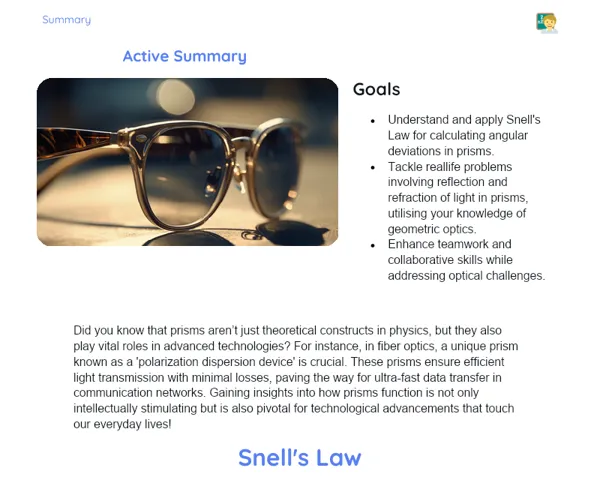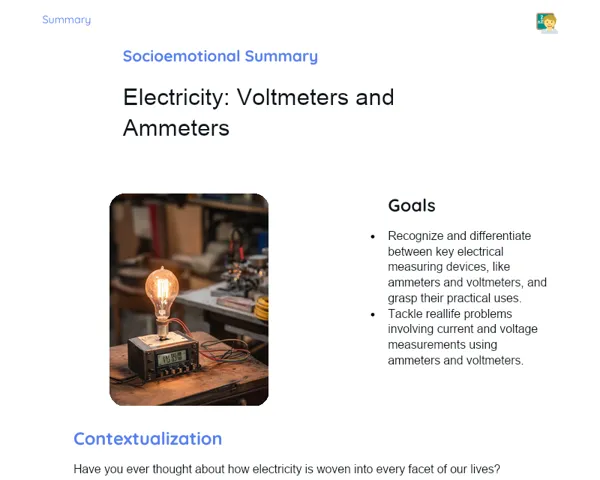Goals
1. Understand the basic concepts of the magnetic field generated by a loop.
2. Calculate the magnetic field produced by a loop.
3. Solve problems related to the calculation of magnetic fields from loops.
4. Enhance practical skills and problem-solving abilities in real-world applications.
Contextualization
Think about the gadgets we use every day: your smartphone, laptop, and even the microwave. All of these devices rely on magnetic fields to function. Learning about the magnetic field created by a loop is crucial for grasping the mechanics behind these technologies. In today’s world, whether it’s wireless charging or electric motors, magnetic fields are integral to modern devices.
Subject Relevance
To Remember!
Definition of Loop and Magnetic Field
A loop is a coiled conducting wire shaped like a circle. When electric current flows through it, it creates a magnetic field around itself, which can be mathematically described. The magnetic field generated by a loop is perpendicular to the plane of the loop, and its strength relies on both the loop’s radius and the current that passes through.
-
Loop: Coiled conducting wire in a circular form.
-
Magnetic Field: The region surrounding the loop where magnetic forces are observable.
-
Perpendicularity: The generated magnetic field stands perpendicular to the loop's plane.
-
Dependence: The strength of the magnetic field is dependent on the loop's radius and the current passing through.
Formula for the Magnetic Field Generated by a Loop
The intensity of the magnetic field at the center of a circular loop can be calculated using the formula B = (μ₀ * I) / (2 * R). Here, B represents the magnetic field, μ₀ is the permeability of free space, I denotes the current in the loop, and R is the loop's radius. This formula can be applied to determine the intensity of the magnetic field across various loop configurations.
-
Formula: B = (μ₀ * I) / (2 * R)
-
B: Magnetic field at the loop's center.
-
μ₀: Permeability of free space (4π x 10⁻⁷ T·m/A).
-
I: The electric current flowing through the loop.
-
R: The radius of the loop.
Practical Applications of Loops in Electronic Devices
Loops are crucial elements in many electronic gadgets. In electric motors, the magnetic field generated by loops interacts with magnets, causing motion. In electric generators, moving loops in magnetic fields produce electric current. Transformers utilize loops to adjust voltage levels in electrical systems.
-
Electric Motors: Employ loops to create movement through the interaction with magnets.
-
Electric Generators: Generate electric current by moving loops through magnetic fields.
-
Transformers: Use loops to alter voltage levels within electrical systems.
Practical Applications
-
Electric Motors: Utilize loops to generate motion in devices ranging from household appliances to electric vehicles.
-
Magnetic Resonance Imaging: Leverages magnetic fields from loops to capture detailed images of the human body.
-
Wireless Chargers: Employ loops for energy transfer between devices without needing physical connections.
Key Terms
-
Loop: A conducting wire shaped and coiled into a circle.
-
Magnetic Field: The area around a magnet or electric current where magnetic forces are present.
-
Permeability of Free Space (μ₀): A physical constant indicating how well free space can transmit magnetic fields.
-
Electric Current (I): The organized movement of charged particles, particularly electrons, through a conductor.
-
Radius (R): The distance from the center of a circle to its furthest edge.
Questions for Reflections
-
How can knowledge about the magnetic field generated by a loop contribute to future tech innovations?
-
What challenges exist in measuring the magnetic field generated by a loop, and how can they be addressed?
-
In which other fields, apart from electrical engineering, can knowledge of magnetic fields be applied?
Measuring the Magnetic Field of a Loop
Let’s create a loop and measure the magnetic field it generates, comparing our practical results with theoretical expectations.
Instructions
-
Form groups of 3 to 4 members.
-
Construct a loop using copper wires, aiming for a diameter of approximately 10 cm.
-
Connect the loop to a power supply and set the current to 1 A.
-
Use a magnetometer to measure the magnetic field at the center of the loop and at various positions around it.
-
Record the observed readings and compare against the theoretical values derived from the formula B = (μ₀ * I) / (2 * R).
-
Discuss any differences between the practical and theoretical measures and the influence of factors such as the number of turns and current strength on the magnetic field.



